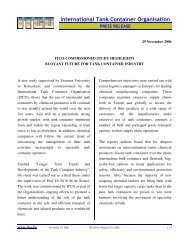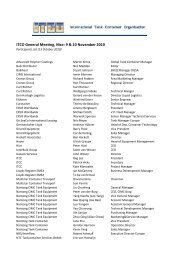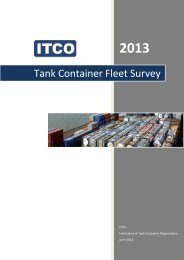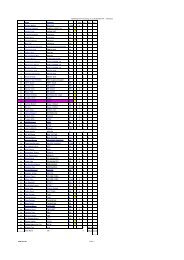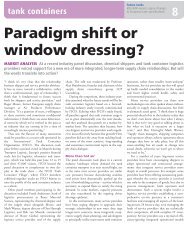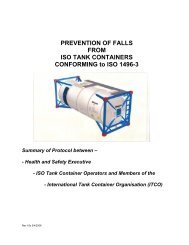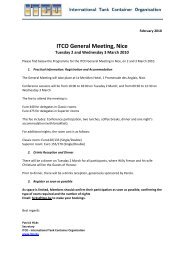You also want an ePaper? Increase the reach of your titles
YUMPU automatically turns print PDFs into web optimized ePapers that Google loves.
ICHCA International <strong>Safe</strong>ty Panel Briefing Pamphlet No 30<br />
(Picture 25) to close to the bottom (Picture 26). The length is critical for<br />
maximum discharge. Therefore they are not interchangeable between<br />
different tanks.<br />
Picture 25 Picture 26<br />
5.3.5.6 In the same area as the valve over the siphon pipe there will usually be at<br />
least two other valves – see the two valves to the right in Picture 24. They<br />
may have the same diameter or one may be larger than the other. One <strong>of</strong><br />
these will be intended to be used either for filling with a pipe or hose<br />
temporarily bolted onto the flange once the covering plate has been<br />
removed or as a vapour return line. The second is intended to be used<br />
either as connection for pressure discharge or it, too, may be used as a<br />
vapour return line.<br />
5.3.5.7 The siphon tube is usually manufactured from the same material as the shell<br />
but can be lined on the internal and external surfaces when the cargo<br />
demands this.<br />
5.3.6 Spill Boxes<br />
5.3.6.1 All <strong>of</strong> the above items can be<br />
normally found within the top<br />
outlet or manway spill box.<br />
These are chambers, sometimes<br />
fitted with a hinged lid or lids<br />
(“storm door(s)”) that retain any<br />
spills from the loading /<br />
discharge process. Picture 27<br />
shows an example <strong>of</strong> a top outlet<br />
spill box.<br />
5.3.6.2 Each spill box will have one or<br />
more drains which will discharge<br />
any liquids clear <strong>of</strong> the tank<br />
container pressure vessel,<br />
cladding and insulation.<br />
Picture 27<br />
5.3.6.3 Drain tubes are generally surface mounted on newer containers and are<br />
usually made <strong>of</strong> clear, see-through plastic so that any liquid or solidified<br />
material can be seen and dealt with. They assist with the drainage <strong>of</strong><br />
rainwater, melt water from snow and ice and any products spilt in the spill<br />
box during loading. On some older designs the drain tubes are covered by<br />
the insulation and cladding and cannot be seen. In the case <strong>of</strong> these tank<br />
containers, the outlets are located at the base <strong>of</strong> the tank. Many false<br />
incidents have been reported with these older tank containers said to be<br />
leaking when liquid is seen dripping from the drain tubes when all that may<br />
be happening is that rain water, condensate or melt water is running <strong>of</strong>f,<br />
Page 13 ©ICHCA International Limited



